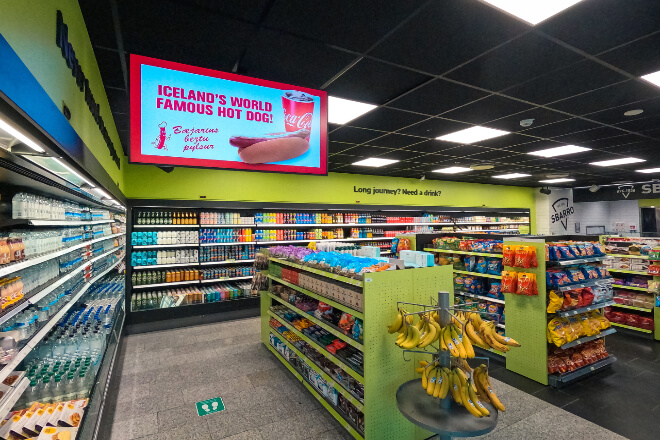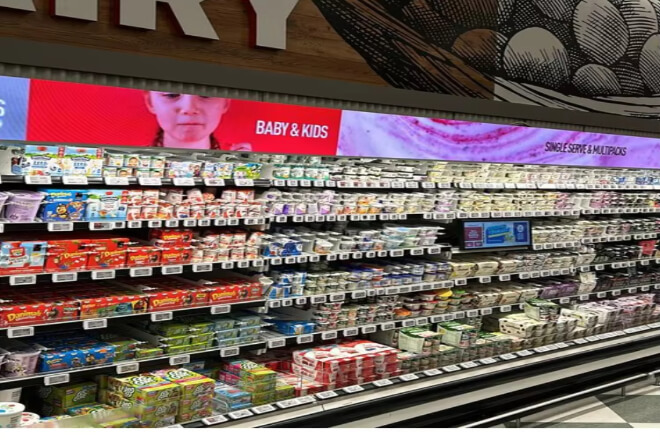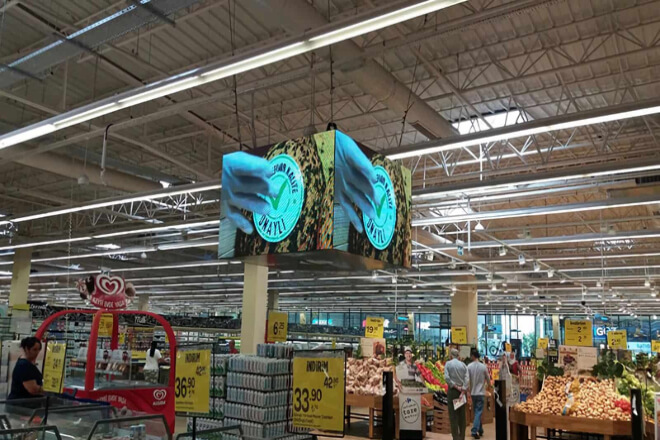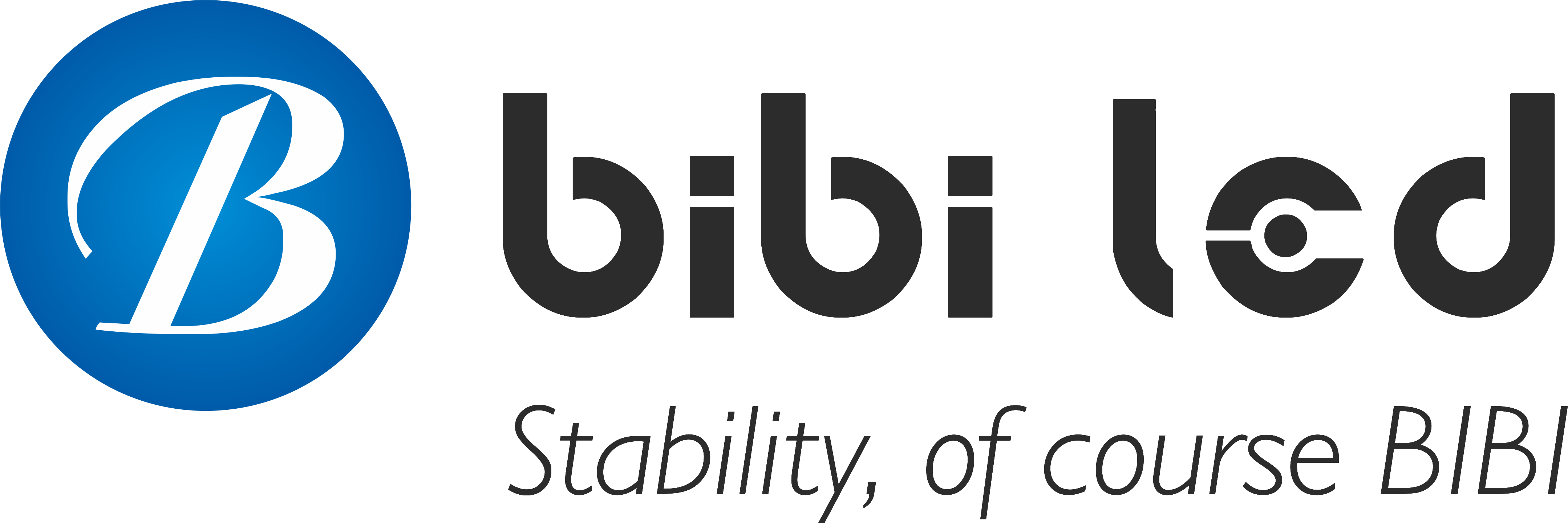Introducción
Have you ever had this experience while shopping in a supermarket: wandering around for ages before finally finding the item you want, or seeing a discounted item but missing out on a promotion?
That’s where pantallas LED come in handy. They not only help you quickly find items but also provide real-time promotional information. How exactly do they do it?
Tabla de contenido
1. What navigational advantages do LED displays bring to supermarkets?

When shopping in a supermarket, do you often feel like you can’t find the item you want, or see something you really want but miss a promotion?
That’s where LED displays come in handy!
1) Real-time Updates on Product Location and Promotional Information
In a supermarket with a wide variety of products, finding the right place isn’t easy.
LED displays can show you the location of products in real time, acting as a “navigation point” in the supermarket!
For example, if you want to buy that popular juice, the LED screen will immediately tell you, “The juice is in section B, third row, go check it out!”
It will also tell you about its special price or limited-time promotion, saving you time and effort.
Furthermore, if the supermarket offers a special deal for the day, the LED display screen can scroll through the latest promotional information, such as “Buy one get one free today!
Hurry and grab yours!” This prevents you from missing out on deals on your favorite items.
2) More Eye-Catching Dynamic Visuals
Ordinary paper signs or blackboards no longer meet customer needs. LED displays, with their dynamic advertisements, animations, and videos, can quickly grab customers’ attention.
You can see videos of delicious food or close-ups of new products playing on the LED screen, instantly sparking your interest.
For example, in the fruit section, the vibrant and colorful fruit videos displayed on the LED screen will not only make your mouth water but also attract you to walk over and take a look, perhaps even picking up a new product you want to try.
Dynamic visuals are more attractive and have a more significant effect than static billboards.
3) Greater Potential for Customer Interaction
LED displays are not just for displaying information; they can also interact with you!
Through touch or QR code scanning, LED screens can provide you with more personalized services.
For example, the LED screen might display “Scan the QR code to get a discount coupon” or “Participate in a lucky draw.”
Simply scan the code with your phone to immediately enjoy the discount or participate in the activity.
This interactivity not only makes shopping more engaging but also stimulates your desire to buy more.
Imagine seeing promotional information pop up on the LED screen—your shopping experience becomes instantly more fun and saves you money!
2. How do LED displays guide customers to quickly find products?

In a supermarket, the longer you browse, the easier it is to get lost among the piles of goods.
To quickly find what you want to buy, an LED display is not just a simple decoration; it’s a powerful “assistant” in the shopping process.
So how does it help you find your desired items among busy shelves?
1) Displaying category guidance at shelf entrances
When you walk into a supermarket and face a wide variety of products, do you often struggle to find a particular category?
LED displays can show clear category information at the ends of shelves, allowing you to know at a glance which direction to go.
For example, you might see LED screens displaying “Milk section on the left” and “Fresh fruit on the right,” preventing you from getting lost in the supermarket and guiding you directly to the correct area.
This not only helps customers quickly find products but also saves time and improves shopping efficiency. Doesn’t shopping feel instantly much easier?
2) Dynamic Arrow or Light Strip Navigation Prompts
Sometimes supermarket aisles can be quite complex, especially in larger stores with many intersections between product areas.
LED displays can clearly guide you to your target area using dynamic arrows or light strip navigation prompts.
For example, if you’re looking for fresh meat, the LED screen will use dynamic arrows or light strips to guide you in the right direction.
Like exploring a supermarket maze, the LED display acts as your “map,” helping you easily find the exit.
This navigation method not only prevents you from wandering aimlessly in the supermarket but also enhances the customer’s shopping experience.
3) Real-time Location Marking of Best-Selling/New Products
“I’m looking for that super popular shampoo,” or “I heard there’s a new product, where is it?” If you often encounter these situations in the supermarket, LED displays can help you solve them!
Supermarkets can use LED screens to mark the location of best-selling, new, or promotional items in real time, ensuring customers find the most popular products immediately.
For example, the LED screen might display “Best-selling items are in section B, third row,” or “New products are at the entrance of section A.”
This eliminates the frustration of not finding the latest bestsellers, making shopping more targeted.
3. Implementation Strategies for Improving Shelf Navigation with LED Displays

How can LED displays maximize their effectiveness in supermarkets? Here are some simple and effective strategies to make the supermarket’s “navigator” work to its fullest potential.
- Choosing the Right Display Model:
LED displays come in many styles; consider the supermarket’s actual needs when choosing one. For small areas, a moderately sized screen is sufficient.
For large supermarkets, larger and brighter screens are needed to ensure customers can clearly see them even in crowds.
Meanwhile, choose durable, low-power models to ensure low operating costs over the long term.
- Installation Location and Angle Optimization:
The installation location is crucial for an LED display to truly function as a navigation device.
Ideally, the screen should be installed along frequently used customer routes at eye level. This way, customers can easily see product information no matter where they are.
The installation angle should also be optimized to ensure every customer can see the display and avoid any issues with visibility.
- Data Management and Update Mechanism:
An LED display is more than just a large “billboard”; it needs constant updates to product information, prices, and promotions.
Supermarkets need a robust back-end management system to ensure that product inventory information is synchronized to the LED screen in real time, providing customers with the latest and most accurate data.
- Interactive Interface Design:
It would be even better if customers could interact with the LED screen!
A touchscreen design allows customers to directly check product locations or view current promotions.
Imagine a customer standing in front of the screen, directly touching to ask, “Which shelf is this milk on?” or “What’s on sale today?”—simple and time-saving.
- Employee Operation Training:
While LED displays are intelligent, supermarket staff also need to know how to operate and manage these devices.
Training staff on how to update screen content, adjust brillo, and troubleshoot simple malfunctions can prevent screen downtime due to faults, ensuring an uninterrupted customer experience.
- Equipment Maintenance and Troubleshooting:
Regularly inspect and maintain the LED screens to ensure smooth operation.
If the screen experiences lag or image problems, staff should be able to quickly identify and fix the issue, preventing inconvenience for customers.
- Promoting Display Functionality:
While LED displays are powerful, it would be a waste if customers didn’t know how to use them.
Supermarkets can use posters, flyers, etc., to inform customers that LED displays can not only find products but also help them discover promotional activities. Understanding these functions will make shopping more convenient for customers.
- Providing User Manuals:
If possible, supermarkets can also place a concise user manual next to the LED displays for customers to easily refer to, preventing confusion during use.
- Initial Investment Estimation:
When selecting a suitable LED display screen, a budget assessment is necessary.
Screen model and installation costs are significant, and ongoing maintenance costs must also be considered.
Choosing a cost-effective LED display screen ensures advertising effectiveness while avoiding budget overruns.
- Long-Term Operating Cost Analysis:
While LED displays have relatively low power consumption, a long-term cost budget is still required if the supermarket has many screens.
Avoid excessive screens that increase unnecessary electricity and maintenance costs.
Ensure the equipment has energy-saving modes and automatic brightness adjustment functions to achieve the lowest possible long-term operating costs.
- Regular Customer Feedback Collection:
The effectiveness of LED displays is not static.
Regularly collecting customer feedback helps understand whether they find the LED screens helpful or what improvements are needed.
This allows the supermarket to optimize the screen’s content and design.
- Data Analysis and System Optimization:
In addition to customer feedback, backend data analysis is crucial.
By monitoring data, the supermarket can identify which information attracts the most customer attention.
And which advertisements are most effective, thereby optimizing display content and improving customer satisfaction.
4. Issues to Consider During Implementation

While LED displays offer convenience for customers when used for supermarket shelf navigation, several key issues require attention during implementation.
How can we ensure that LED displays truly function effectively in a supermarket without confusing customers or wasting resources? Here are some points to pay special attention to:
1) Coordination of Screen Size and Shelf Proportion
Imagine an LED display that is too small; customers might not be able to see the content clearly from a distance.
If it’s too large, it will make the entire shelf look overcrowded, even negatively impacting the shopping experience.
When selecting an LED display, the size and proportion to the shelf are crucial. The screen should not be too large or too small; ideally, it should match the space ratio of the shelf.
This ensures that advertisements and product information are clearly visible while maintaining the overall neatness and aesthetics of the supermarket.
A suitable screen size allows customers to quickly grasp information without disrupting the visual effect of the entire shelf.
2) Balance Between Information Quantity and Simplicity
Although LED displays can display a wealth of information, too much or overly complex information can confuse customers.
During implementation, it’s important to control the amount of information to avoid overloading the screen with content.
For example, displaying multiple product locations, promotions, and new arrivals on a single screen can leave customers unsure of which to focus on.
The best approach is to keep the information concise, clear, and immediately understandable.
Show only one key piece of information at a time, such as “Today’s Hot Selling Items” or “Limited-Time Discounts.” This grabs the customer’s attention without overwhelming them with information.
3) Cost and Return Assessment
The initial investment in LED displays can be substantial, so a balance must be struck between investment and return.
When selecting a screen, consider not only hardware and installation costs but also long-term operating expenses (such as electricity and maintenance).
More importantly, assess the return on investment, such as the increase in customer conversion rates or the effectiveness of promotional activities.
Through data tracking and customer feedback, ensure the screen’s use delivers sufficient benefits to maximize ROI. A significant return justifies the investment in LED displays.
5. Conclusión
In summary, LED displays truly provide “twice the result with half the effort” in supermarket shelf navigation.
From real-time product information displays to dynamic alerts for best-selling items, LED displays not only make shopping more efficient but also enhance the customer experience.
Through appropriate hardware selection, system optimization, and customer education, LED displays can easily become a powerful tool for supermarkets, helping them increase sales and making the customer shopping experience smoother.
Por último, para obtener más información sobre las pantallas LED, Por favor póngase en contacto con nosotros.
